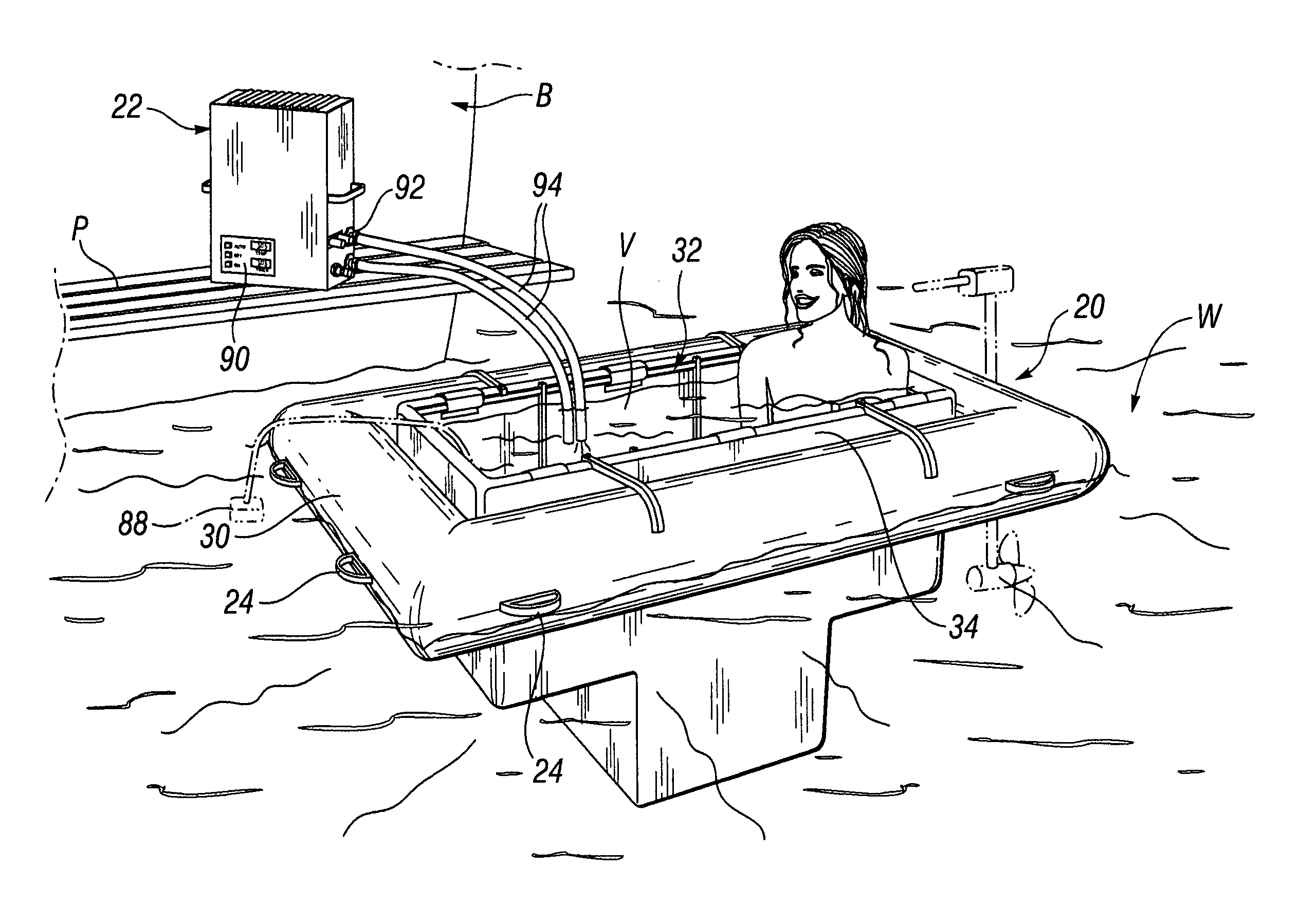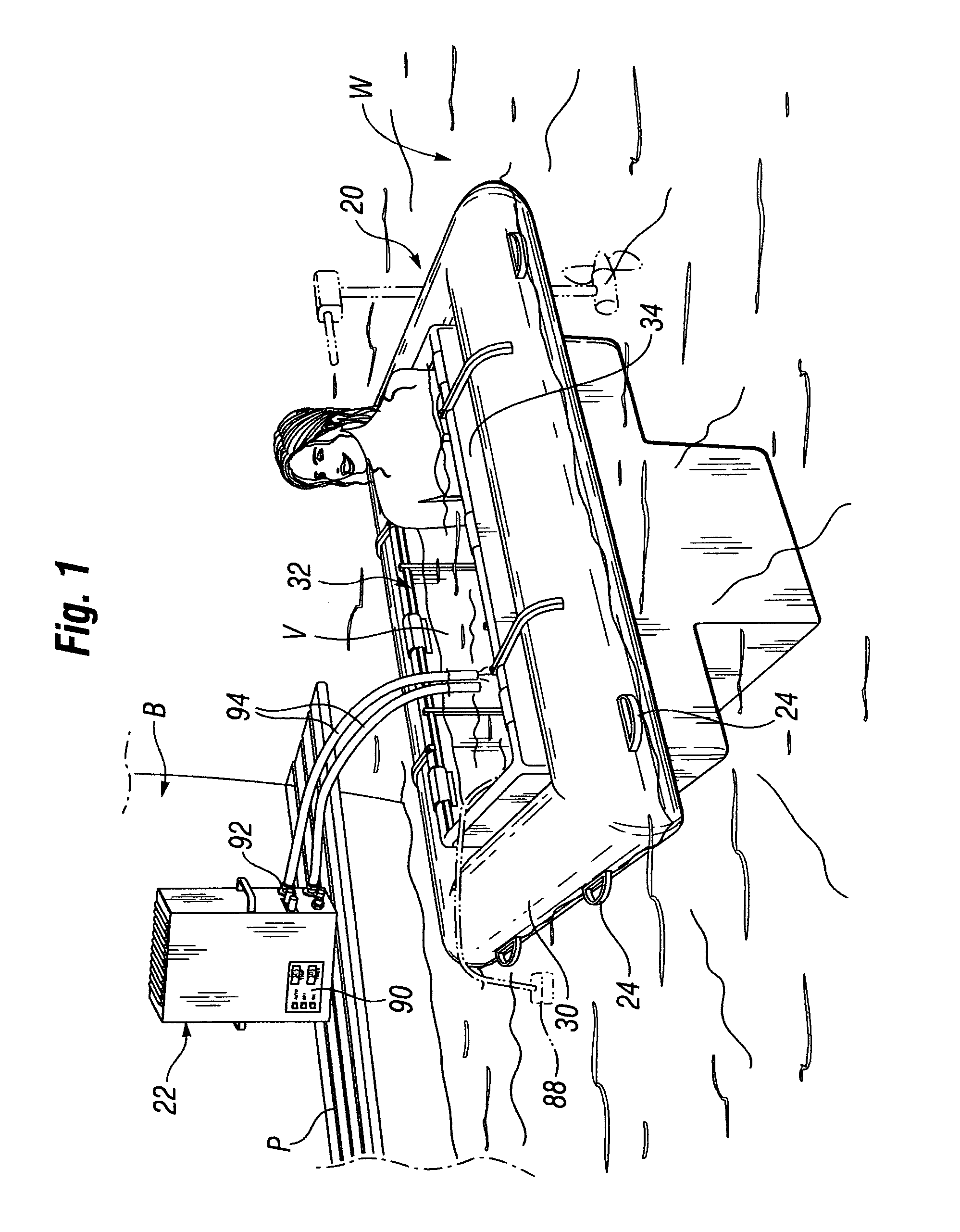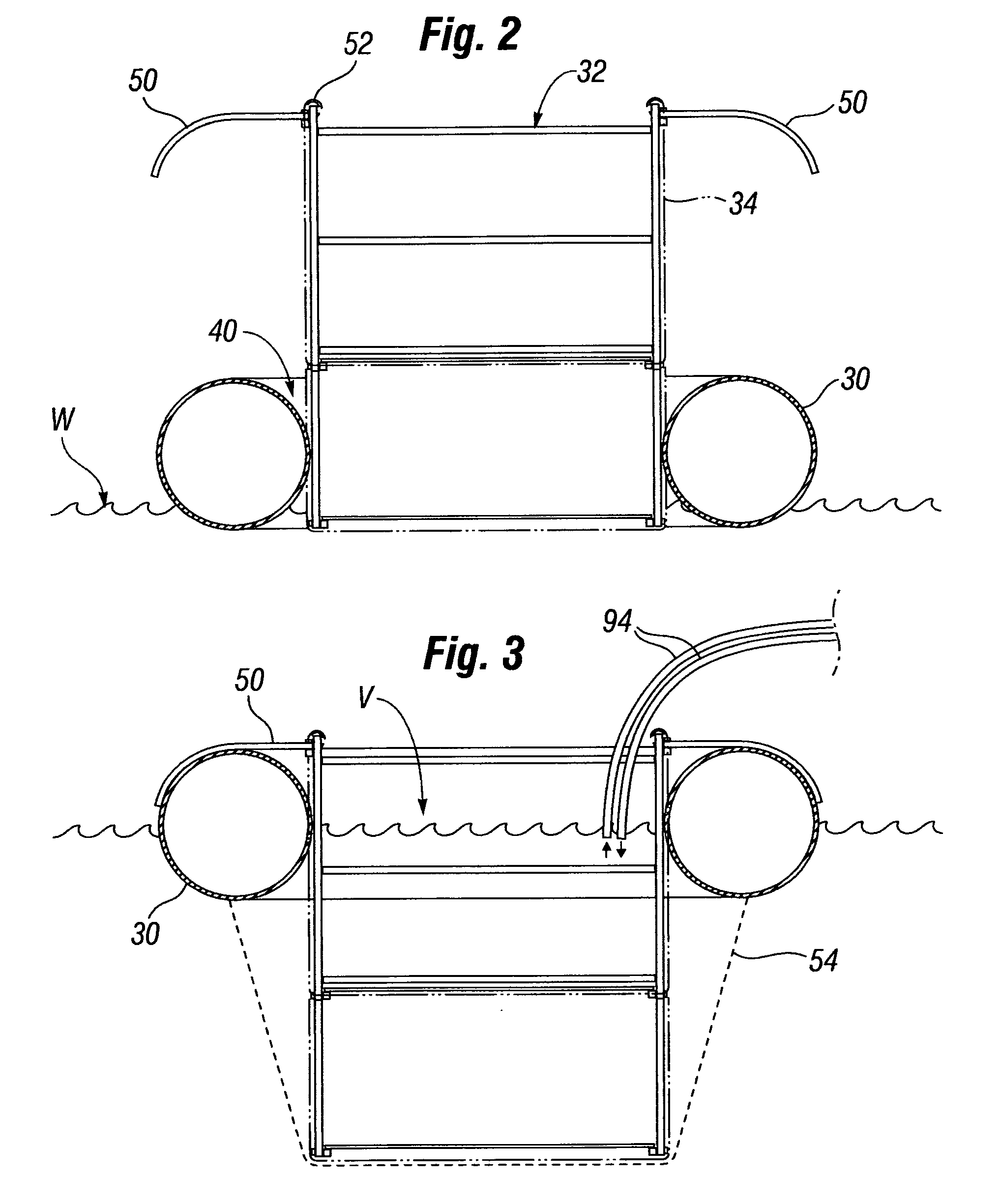Portable floating hot tub
a floating hot tub and portable technology, applied in the field of portable hot tubs, can solve the problems of not being economically feasible for remote locations to use portable hot tubs, not being able to provide extremely strong sidewalls, and being relatively sophisticated and expensive electronically monitored, so as to achieve convenient assembly, easy entry and exit, and comfortable seating
- Summary
- Abstract
- Description
- Claims
- Application Information
AI Technical Summary
Benefits of technology
Problems solved by technology
Method used
Image
Examples
Embodiment Construction
[0037]The present invention provides a portable floating hot tub that is an improvement over previous designs. The exemplary hot tub of the present invention is easy to set up and take down by one person in any confined space and in a short amount of time, is stable in even choppy waters, and retains heat for a significant length of time. Moreover, the components of the hot tub can be carried in two small luggage-sized bags that are easily transported and stored in a small space. A number of desirable features described herein combine to provide a truly advanced portable floating hot tub, though it should be understood that certain features by themselves and some combinations thereof are believed novel and may be incorporated into other portable floating hot tubs for a similar advantage. Therefore, the present invention should not be considered limited to the exemplary system described herein, but instead should be evaluated by reference to the appended claims.
[0038]The 1 illustrate...
PUM
| Property | Measurement | Unit |
|---|---|---|
| weight | aaaaa | aaaaa |
| inner volume | aaaaa | aaaaa |
| diameter | aaaaa | aaaaa |
Abstract
Description
Claims
Application Information
 Login to View More
Login to View More - R&D
- Intellectual Property
- Life Sciences
- Materials
- Tech Scout
- Unparalleled Data Quality
- Higher Quality Content
- 60% Fewer Hallucinations
Browse by: Latest US Patents, China's latest patents, Technical Efficacy Thesaurus, Application Domain, Technology Topic, Popular Technical Reports.
© 2025 PatSnap. All rights reserved.Legal|Privacy policy|Modern Slavery Act Transparency Statement|Sitemap|About US| Contact US: help@patsnap.com



